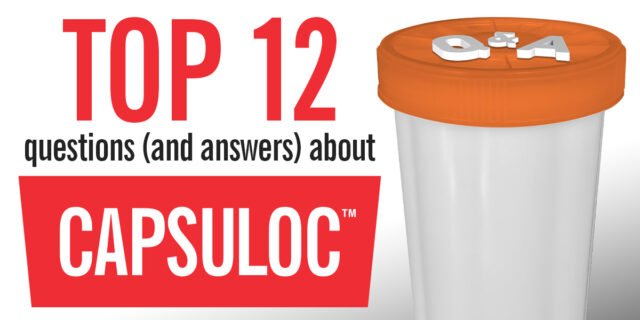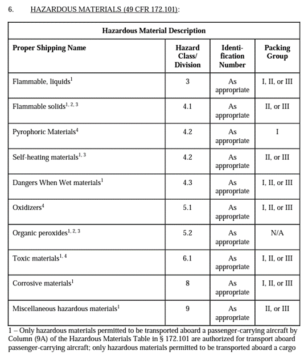
“Why didn’t someone think of this sooner?”
That’s one question we hear a lot about our new Capsuloc™ secondary hazmat containers. They don’t look or work like the metal can exemption shippers Dangerous Goods shippers have used for decades. But once people see all the advantages Capsuloc kits offer, they want to know as many details as possible.
Here are the top 12 questions we hear about Capsuloc—and the answers, of course!
Frequently asked questions (FAQ) about Capsuloc:
#1: What are Capsuloc containers made of?
The bottle portion of the container is manufactured with a high-density polyethylene resin and the lid is manufactured with a polypropylene co-polymer resin.
#2: Does Capsuloc offer the same protection as a metal secondary hazmat container?
Yes. When properly assembled and closed in its UN-specification packaging, Capsuloc offers the same protection against leaks and spills as a metal container. In fact, its protection is probably even better—see the next question.
#3: Has Capsuloc passed rigorous testing?
With flying colors. We recently subjected Capsuloc to rigorous vibration, pressure differential and penetration tests, which it not only passed but also significantly outperformed metal cans subjected to the same tests. (Take a closer look at the test results here.)
#4: Does Capsuloc have a DOT Special Permit for regulatory relief?
Yes. As a result of the testing mentioned above, PHMSA issued Special Permit DOT-SP 21488 in May, 2023. It is also accepted as exemption by UPS and FedEx. The PHMSA Special Permit gives Capsuloc relief from regulatory burdens similar to the relief other exemption packagings with metal can containers receive. See the next two questions for more details.
#5: Is Capsuloc compliant for shipping the same materials as metal exemption containers?
Yes. Special Permit DOT-SP 21488 permits use of Capsuloc kits (when properly assembled and closed in its UN-specification packaging) for many hazard class 3, 4, 5, 6, 8 and 9 shipments, including toxic inhalation hazard and pyrophoric materials. Here’s a complete list:

#6: Do we need hazard labels or placards when using Capsuloc?
Not if you follow the provisions of Special Permit DOT-SP 21488. When properly assembled and closed in its UN-specification packaging, Capsuloc can be used to transport many hazard class 3, 4, 5, 6, 8 and 9 shipments without hazard labels or placards.
#7: How do you open and close Capsuloc containers?
Just twist the lid on or off with a torque wrench. Yes, it’s really that easy. No more hammering and prying with mallet and screwdriver.
#8: Do Capsuloc containers require ring locks?
Nope. In fact, based on its performance on vibration tests, Capsuloc containers don’t even require tape.
#9: Are Capsuloc containers reusable?
Yes. You can reuse a Capsuloc container with the same inner gaskets three times, and reuse it three more times every time you replace the gaskets.
#10: Are Capsuloc containers recyclable?
Yes. We know many supply chain operations are making sustainability a higher priority, so we’re happy to say Capsuloc containers and lids are fully recyclable.
#11: Do Capsuloc kits weigh more than kits with metal secondary hazmat containers?
No—in fact, they weigh 32% less than typical metal can kits. So, in addition to being more convenient and more durable than metal cans, Capsuloc can also save you money with every shipment.
#12: What other Capsuloc advantages should I know about?
Capsuloc helps you save inventory space because you can stack twice as many Capsuloc kits on a pallet as typical metal can kits.
Also, Capsuloc lets you use any inner bottle up to 1 liter by air—even if your bottle isn’t capable, or hasn’t been proven to pass the pressure test itself—as long as it’s compliantly packaged in a Capsuloc kit.
Have more questions about Capsuloc?
If you have a question that wasn’t answered above—or just want more information to know if Capsuloc is a good fit for your operation—call the experts at Labelmaster. We’ll discuss your materials, your workflows and all the details that go into making the best packaging decisions.


